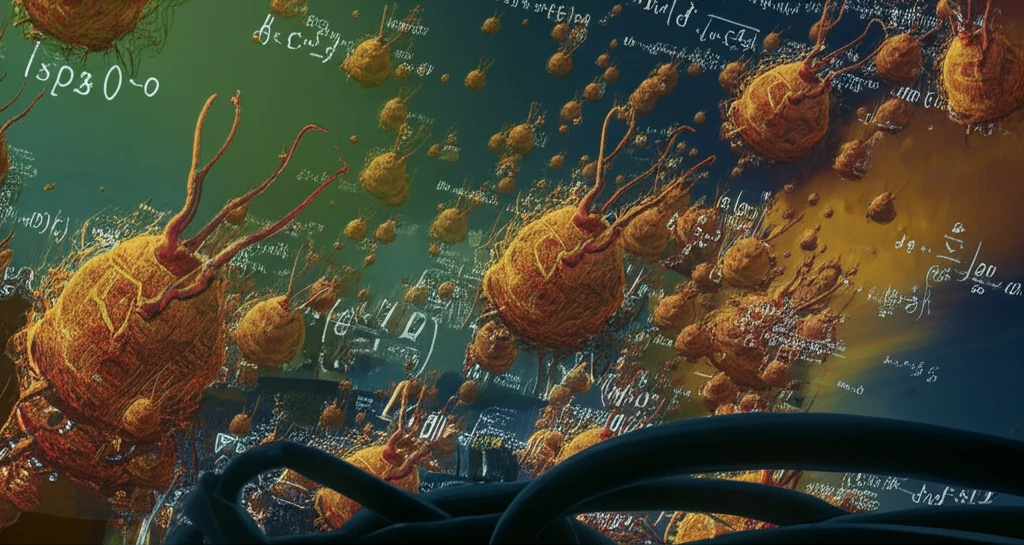
Decoding Microbes: How Tiny Organisms Are Revolutionizing Science
"Uncover the power of microbial models in mathematics and scientific research, exploring their surprising impact on ecological studies and more."
In the vast world of scientific exploration, models act as crucial tools, simplifying complex systems to make them understandable and manipulable. While we often think of models as abstract equations or computer simulations, the life sciences offer a unique twist: organisms themselves as material models. These aren't just any organisms; they are often microorganisms, chosen for their tractability and ability to represent larger ecological and evolutionary phenomena. For years, microbes like bacteria and protists have played a pivotal role in research, driving significant breakthroughs in fields ranging from genetics to ecology.
These microbial models offer scientists a way to observe and manipulate real-world processes in a controlled environment, allowing them to test theories and develop new insights. However, the use of living organisms as models raises important questions about how these models relate to the phenomena they represent. Are they merely simplified versions of reality, or do they offer something more? How do they compare to traditional mathematical and computational models? Recent discussions have even started questioning how closely those models relate to real-life occurrences.
The interplay between different types of models—material, mathematical, and computational—is a central theme in modern scientific inquiry. Often, these models are treated as independent tools, each offering a unique perspective on the same target. But what happens when these models interact directly, informing and refining each other? This article delves into the fascinating world of microbial models, exploring how they interact with mathematical and computational approaches to advance our understanding of complex biological systems. Join us as we unravel the secrets of these tiny titans and their surprising impact on science.
The Power of Microbes: A New Perspective on Scientific Modeling

Traditionally, models in science are categorized into mathematical, computational, and material types. Mathematical models use equations to describe phenomena, computational models use algorithms, and material models use physical structures. In life sciences, these physical structures are often living organisms. Microbes offer several advantages as material models. Their rapid reproduction rates allow scientists to observe evolutionary changes in real-time, something impossible with larger organisms. They are also easily manipulated in the lab, making it possible to control environmental factors and isolate specific variables.
- Tractability: Microbes are easy to handle and manipulate in a lab setting.
- Fast Reproduction: Observe evolutionary changes rapidly.
- Comparative Modeling: They enhance and validate mathematical models.
- Accessibility: Simplified systems remove complexity.
The Future of Modeling: Embracing Microbial Insights
Microbial models offer unique advantages, not just for their practical tractability but also for their epistemic value. By simplifying complex systems and allowing for direct comparisons with mathematical and computational models, microbes help scientists uncover fundamental principles that might otherwise remain hidden. As we continue to grapple with increasingly complex challenges in ecology, medicine, and beyond, embracing the insights from microbial models will be crucial. It's time to recognize these tiny organisms for what they are: not just subjects of study, but powerful allies in our quest to understand the world.
